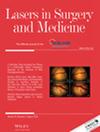The Efficacy and Safety of Erbium-Doped Yttrium Aluminum Garnet Laser Therapy for Stress Urinary Incontinence: A Systematic Review and Meta-Analysis
Abstract
Objectives
The erbium-doped yttrium aluminum garnet(Er:YAG) laser therapy has recently emerged as a novel treatment for stress urinary incontinence (SUI) in women. The purpose of this meta-analysis was to evaluate the efficacy and safety of Er:YAG laser therapy in the management of SUI.
Materials and Methods
We conducted a search in the databases MEDLINE, EMBASE, and the Cochrane Library, up to December 2024, to identify randomized controlled trials (RCTs) that mentioned the use of Er:YAG laser therapy for the treatment of SUI. A systematic review and meta-analysis was conducted.
Results
The meta-analysis included four publications with a total of 390 patients diagnosed with SUI. Posttreatment analysis revealed statistically significant improvements in the Er:YAG laser therapy group for the 1-h pad test (mean difference [MD]: −10.42; 95% confidence interval [CI], −17.32 to −3.53; p = 0.003) and the number of subjective cures as assessed by the International Consultation on Incontinence Questionnaire-Short Form (ICIQ-SF) (odds ratio [OR]; 6.21, 95% CI; 1.55–24.84, p = 0.01). However, no significant differences were observed in the change of ICIQ-SF scores (MD: −0.15; 95% CI, −0.77 to 1.07; p = 0.75) and Pelvic Organ Prolapse/Urinary Incontinence Sexual Questionnaire (PISQ-12) scores (MD: 0.81; 95% CI, −0.24 to 1.85; p = 0.13). In terms of comfort, pain visual analog score (VAS) was higher in the laser therapy versus sham therapy following both treatment sessions (The pain VAS after session one (MD; 3.72, 95% CI; 3.24–419, p < 0.00001). The pain VAS after session two(MD; 2.64, 95% CI; 2.12–3.15, p < 0.00001). Regarding adverse events, there were no statistically significant differences between the Er:YAG laser group and the sham group in terms of increased vaginal discharge (OR; 4.64, 95% CI; 0.27–78.30, p = 0.29), vaginal discomfort (OR; 1.31, 95% CI; 0.62–2.73, p = 0.48), and suspected urinary tract infection (UTI) (OR; 3.44, 95% CI; 0.57–20.58, p = 0.18).
Conclusions
Our meta-analysis indicates that the Er:YAG laser appears to be a safe and effective treatment option for SUI.

 求助内容:
求助内容: 应助结果提醒方式:
应助结果提醒方式:


